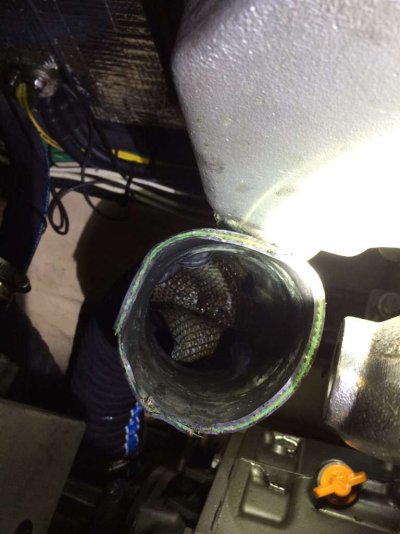cardude01
Guru
- Joined
- Nov 26, 2012
- Messages
- 5,290
- Location
- USA
- Vessel Name
- Bijou
- Vessel Make
- 2008 Island Packet PY/SP

I recently replaced the piece of exhaust hose that runs from the elbow to the muffler. It had collapsed inside-- see pic.
I didn't look at the run of hose from the muffler to the exhaust outlet however because I was too tired at the time. Is there a possibility that section of hose also needs to be replaced? I had hoped that since it was further from the elbow it might still be OK since it's cooler?
Why do these exhaust hoses collapse like this?
